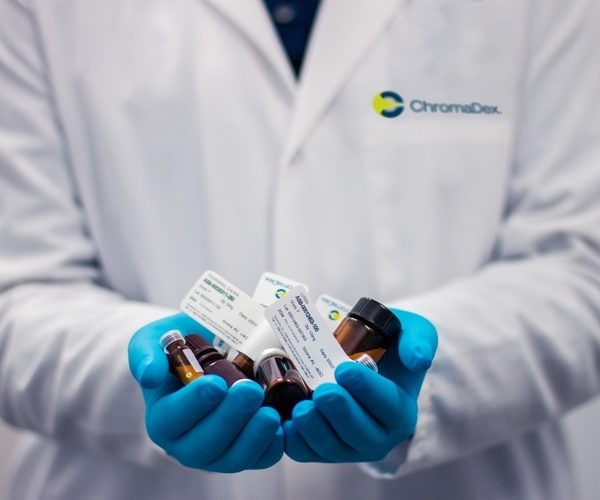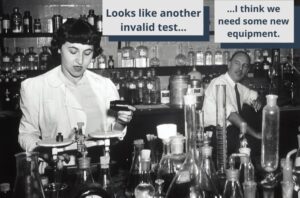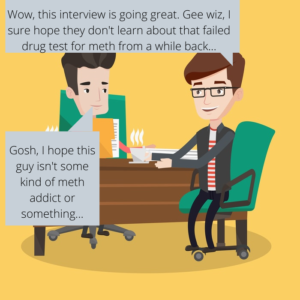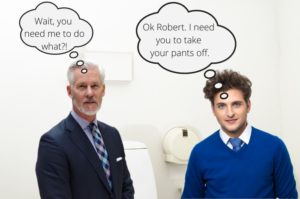The goal of this post is to provide an overview and summary of the DOT drug testing requirements. These requirements and rules hold up for all DOT agencies: FMCSA, FAA, PHMSA, FRA, FTA, and USCG.
Those requirements can be found in the federal title 49 CFR Part 40. That title covers the DOT drug testing requirements, process, and all of the parties involved. If you have several hours to dig into the details, then click the link and get to reading.
But if you’d rather get a good summary of the requirements in a fraction of the time, then continue reading here.
Who Must Take Part in DOT Testing: the Safety-Sensitive Position
The first of the DOT drug testing requirements we need to cover is who must participate in the program.
Employees performing safety-sensitive functions must participate in an employer’s DOT drug and alcohol testing program.
We have written another post that goes into detail on the safety-sensitive position definition for FMCSA and FAA-regulated companies. Even if you are not regulated by the FMCSA or FAA, it still gives you a good idea of which positions are safety-sensitive. So it is still worth checking out.
The Six DOT Drug Testing Situations
Our summary of the DOT drug testing requirements starts with the six situations in which DOT drug and alcohol testing is permitted. Employers have the responsibility to test in each of these situations when appropriate. They are as follows:
- Pre-employment
- Post-accident
- Reasonable suspicion
- Random
- Return-to-duty
- Follow-up
These are the only situations in which DOT drug testing is permitted.
DOT Pre-Employment Testing
Pre-employment testing is when employers test applicants and transfers to safety-sensitive positions. This includes new hires as well as existing employees transferring to safety-sensitive functions.
If you would like to know what a safety-sensitive position is, you can click the link. It will take you to another one of our blog posts that defines the safety-sensitive position for the FMCSA and FAA. If you are a company regulated by another DOT agency, the post can still give you a good idea about safety-sensitive positions.
Pre-employment testing is meant to stop drug users from entering the safety-sensitive workforce. For example, if someone is a chronic drug user and she knows that part of an application process involves a drug test, she is less likely to apply.
The DOT requires that employers do pre-employment drug testing. However, alcohol testing is optional.
DOT Post-Accident Testing
Post-accident drug and alcohol testing is when employees involved in an accident are tested for drugs and alcohol following the accident.
Each DOT agency defines an “accident” differently. For example, the FMCSA’s definition of an accident is different than the FRA’s definition. Each respective accident involves different machinery and vehicles.
DOT Reasonable Suspicion Testing
Reasonable suspicion testing is done when a trained supervisor (or supervisors) has evidence that a safety-sensitive employee is under the influence of drugs or alcohol. Of course, mixing drugs, alcohol, and safety-sensitive functions is a DOT policy violation.
Also, supervisors of safety-sensitive employees must get training on how to determine reasonable suspicion and carry out reasonable suspicion testing.
DOT Random Testing: Definition and Rates
Random testing is the unannounced testing of a percentage of workers annually. The random tests are to be spread throughout the year, so as to deter the use of drugs and alcohol against DOT policy.
Each DOT agency sets a percentage for both drugs and alcohol. The rates are set based on the prior year’s testing statistics. If policy violations trend down, the rates tend to drop as well. But if policy violations rise, the rates rise with them.
Also, the rates indicate the percentage of workers who must be tested.
As of 2019, the DOT random testing rates are:
- FMCSA: 25% for drugs, 10% for alcohol
- FAA: 25% for drugs, 10% for alcohol
- FTA: 50% for drugs, 10% for alcohol
- PHMSA: 50% for drugs, n/a for alcohol
- USCG: 50% for drugs, n/a for alcohol
- FRA: for covered service — 25% for drugs, 10% for alcohol; for maintenance — 50% for drugs, 25% for alcohol
DOT Return-to-Duty Testing
After a policy violation, the DOT drug testing requirements state that employees must go through a process of evaluation and treatment. After they complete this process, they are eligible to return to safety-sensitive work. But their return is conditional on passing a DOT return-to-duty drug or alcohol test.
If they pass this test, they can return to safety-sensitive functions.
DOT Follow-Up Testing
After employees pass a DOT return-to-duty test, they are subject to follow-up testing for up to five years after resuming safety-sensitive work.
Follow-up testing is in addition to random testing. So an employee who has returned to a safety-sensitive position after a policy violation may have to take random tests along with the follow-up tests. It just depends on whether they get selected for random testing.
But follow-up testing does not exempt them from random testing. Employees doing follow-up testing must also take part in random testing.
When to Test for Drugs, Alcohol, or Both
DOT drug testing requirements differ for each of the DOT testing situations. Some require that you test for both drugs and alcohol, while others allow you to test for just drugs and not alcohol.
For example, DOT pre-employment drug testing is required, while alcohol testing is optional. But if an employer decides to do pre-employment alcohol testing, they must do it all the time. Otherwise there is a concern over discrimination.
With DOT random testing, the rates for both drugs and alcohol are set by the DOT agencies.
With reasonable suspicion testing, whether you test for drugs or alcohol depends on the supervisor’s observations. If the signs indicate drug use, then you do a DOT reasonable suspicion drug test; if they indicate alcohol use, then you do an alcohol breath test; and if the use of both is in question, then you do both. It really just depends on the observations made.
With DOT post-accident testing, you must test for both alcohol and drugs.
And with DOT return-to-duty and follow-up testing, you must test for whatever the substance abuse professional recommends in the evaluation and treatment phases.
The Drug Schedules
The U.S Drug Enforcement Administration classifies drugs into five schedules. Schedule 1 is for the riskiest drugs. These drugs are the most dangerous, least beneficial, and most tightly controlled.
Schedule 5 is for drugs that are the least dangerous, most beneficial, and least tightly controlled.
The 5-Panel Drugs
DOT drug tests screen for the 5-panel drugs. They are:
- Cannabinoids: marijuana, hashish, hash oil; come from the Cannabis sativa plant; smoked or eaten; and have no federally approved medical uses
- Cocaine: highly addictive stimulant from the coca tree leaf; a white powder that is sniffed or snorted; crack is a form of cocaine
- Amphetamines: methamphetamine, MDA, and MDMA (Ecstasy); stimulants that are swallowed, smoked, injected, and occasionally sniffed
- Opioids: heroin, morphine, codeine; made from poppy plants or in labs; some forms prescribed for pain relief, while others have no medical benefit
- Phencyclidine (PCP): once an animal anesthetic, now banned due to widespread abuse
The DEA places each of the 5-panel drugs in either Schedules 1 or 2. They are dangerous and have few medicinal benefits.
The DOT Drug Testing Process
There are five steps to the DOT drug testing process, as described in the DOT drug testing requirements. They are as follows:
- The donor provides a specimen
- The collector collects that specimen according to the outlined rules
- The lab analyzes the specimen
- The medical review officer (MRO) verifies the lab results
- The DER receives the results from the MRO
Donor Provides a Specimen
In the case of DOT drug testing, the donor is the safety-sensitive employee or applicant. The donor must provide a urine specimen for one of the six situations highlighted earlier in this post.
Collector Collects the Urine Specimen
In the second step, a collector must collect the specimen from the employee or applicant. The collector must be trained; if you need detailed info on collector requirements, you can see them in 49 CFR Part 40, Subpart C. To quickly sum up the requirements, collectors must have:
- Basic information regarding 49 CFR Part 40, the “DOT Urine Specimen Collection Procedures Guidelines,” and the DOT regulations for the specific DOT agencies of the companies you collect for
- Qualification training
- Initial proficiency demonstration
- Refresher training
- Error correction training (if the collector ever makes a mistake)
- Documentation that all of these requirements are met
It is no small feat to become a qualified collector for DOT drug tests.
The collector will walk the donor through the collection process, oversee that the process proceeds correctly, and document that the collection took place according to protocol. You can read the urine collection steps at 49 CFR Part 40, Subpart E.
And collections will typically occur at a medical facility, mobile facility, or specialized collection site.
Lab Analyzes the Specimen
The urine specimen is then sent to a lab where it is then analyzed.
Bear in mind that for a lab to be used for DOT drug testing, it must be certified by Health and Human Services (HHS). And there are not many labs that have this HHS certification. There are around 30 of these such labs. Labs must pass rigorous and ongoing testing of lab analysis standards to receive and maintain HHS certification.
The labs doing the specimen analysis are highly competent.
When the urine specimen reaches the lab for testing, the lab first does validity testing. Validity testing is when they test the specimen for any form of tampering. Far more often than not, if the specimen has been adulterated, diluted, or substituted in any way, the lab will recognize this in the validity testing process.
Then the lab continues with a screening test, which is an initial test to screen for the presence of controlled substances above their cutoff levels.
Finally, whether the lab finds controlled substances or not, they do a confirmation test to rule out or confirm the presence of 5-panel drugs.
MRO Verifies the Results
The lab then sends their DOT drug test results to a medical review officer (MRO). The MRO is an independent, licensed physician with training in substance misuse. The MRO verifies the lab’s findings before contacting the employer with the result.
If the result is non-negative, the DOT drug testing requirements dictate that the MRO needs to contact the donor to discuss possible medical explanations. After this conversation, the MRO will then report the result to the DER.
What the MRO Reports to the DER
Once the MRO verifies the lab results, she will then report one of four results to the DER. They are as follows:
- Verified positive
- Verified negative
- Cancelled test
- Verified refusal to test
Verified Positive Drug Test Result
The MRO reports this when the lab reports a positive result, and after interviewing the donor, the MRO cannot find any plausible explanation for the result. Using a term frequently used in the DOT drug testing requirements 49 CFR Part 40, there is no “legitimate medical explanation.”
Verified Negative Drug Test Result
There are two scenarios in which an MRO would report a verified negative drug test result to a DER.
The first is that the lab reported a negative result, and then the MRO found no flaws in the testing process.
And the second is that the lab reported a positive result, but the MRO found a legitimate medical explanation for that positive result. Usually when a legitimate medical explanation is found, it happens during the MRO and donor conversation. That is the main reason why it is part of the process.
Cancelled Drug Test Result
The MRO reports a cancelled drug test result to the DER when she finds a serious flaw in the testing process. Also, the MRO will cancel the test if the lab reports an invalid specimen.
One other instance where the test may be cancelled is if the lab reports an adulterated or substituted test result, but then the MRO finds a legitimate medical explanation for the lab’s findings.
Verified Refusal to Test
If the MRO finds that the donor either adulterated or substituted their specimen with no legitimate medical explanation for the finding, the MRO will report a verified refusal to test to the DER.
The DOT considers adulterating or substituting a specimen an obstruction of the testing process. As a result, either of those actions is deemed a refusal to test.
And if you recall, DOT drug testing requirements view a refusal to test in the same light as a verified positive test.
DOT Drug Test Failure: Now What?
In instances where the DER learns from the MRO that an employee either tested positive or refused to test, the DER must remove the employee from safety-sensitive functions immediately. Then, the DER must refer the employee to a Substance Abuse Professional (SAP) for evaluation and treatment.
Even if the employee is not fired after the DOT drug test failure, that employee cannot return to safety-sensitive work until completing the DOT return-to-duty process. In that process, the SAP sets a treatment and evaluation plan for the employee to the carry out.
After carrying out the plan, the employee is then eligible to take a DOT return-to-duty test to resume safety-sensitive functions. And once she passes that test, she then must pass a series of follow-up tests spanning for at least one year and up to five years.
If you’d like to learn more about the DOT return-to-duty process, click the link. We’ve written a detailed post on the steps and agents involved.
How Do Employers Handle a Cancelled Test?
The MRO may cancel a test for a few reasons:
- Serious flaw in testing process uncovered
- Lab reported invalid result
- The MRO found legitimate medical explanation for an adulterated or substituted test result
In the event of a cancelled test, a re-test may be required — but not always. If it is, the MRO will inform the employer. And in some instances, the re-test must be directly observed by the collector.
DOT Alcohol Testing Procedures
The DOT alcohol testing process is simpler than the drug testing process because you receive results at the time of the test. As a result, there is no specimen shipment, lab analysis and MRO verification.
Step 1: Employee Provides Breath or Saliva Sample for a Screening Test
The first step to DOT alcohol testing is that the employee provides a specimen for a screening test.
Just as with a drug test, the employee must provide a specimen for testing. In the case of alcohol testing, though, it is typically a breath sample, unlike the urine sample used in drug testing.
Similar to DOT drug testing, alcohol testing is done at a collection site such as a medical facility, mobile facility, or specialized collection site.
The screening test is done with an alcohol screening device (ASD), and the test is conducted by either a screening test technician (STT) or a breath alcohol technician (BAT).
If a screening test shows a blood alcohol concentration (BAC) of 0.02 or higher, a confirmation test is required.
Step 2: Employee Undergoes Alcohol Confirmation Test
As just explained, the DOT alcohol testing process only progresses to this step if the ASD shows a blood alcohol concentration of 0.02 or higher. If the test result shows a BAC less than 0.02, then you skip this step.
Sometimes it is possible for an alcohol screening to show an inaccurate reading due to an accumulation of mouth alcohol. For this reason, a confirmation test is a necessary step in the process. We don’t want people getting fired because they chewed gum right before their alcohol test.
To give this mouth alcohol time to dissipate, there is a waiting period between the screening test and confirmation test. It should be at least 15 minutes but no more than 30 minutes. Not enough time, and the mouth alcohol may still be present; too much time, and any alcohol in the system may have enough time to clear.
A breath alcohol technician must perform the alcohol confirmation test. STTs cannot do them. Also, the confirmation test must use a testing device called an evidential breath test (EBT). And yes, the DOT testing process is quite fond of acronyms.
Step 3: DER Receives the Results from a BAT or STT
After the test, the BAT or STT must send these results to the DER. If the results are negative, then the DER does not have to take any action. But if they are positive, the DER must remove the employee from safety-sensitive functions, meet with the employee, and refer him to a substance abuse professional for evaluation and treatment.
The employee must complete the DOT return-to-duty process.
The results for a DOT alcohol test are the same as a drug test. It can be either positive, negative, cancelled, or a refusal to test.
A positive test requires both a screening and confirmation test of 0.02 or higher.
A negative test requires just one of the two to be less than 0.02.
A cancelled test happens typically due to a serious flaw in the testing process or equipment. Occasionally it happens for certain other reasons.
And a refusal to test occurs when an employee does not show up for the test, provide enough breath for the test (without a medical explanation), or obstructs the testing process in any way.
DOT Drug Testing Requirements that Protect the Donor
The DOT drug testing requirements include safeguards that protect the donor from false positive results. We are going to run through a series of questions that employees may have about the testing process, and then we will answer each one.
What Happens if an Employee/Donor Cannot Provide Enough Urine for the Test?
In the DOT drug testing requirements, this situation is called “shy bladder.”
The protocol is for the collector to give the donor some water to drink and allow extra time for the collection.
If the donor still cannot provide enough urine, then that donor must be evaluated by a physician. If the physician finds a legitimate medical explanation for the donor’s struggles, then the MRO cancels the test. The employer takes no further action.
But if the physician finds no medical explanation, then the MRO reports a verified refusal to test.
What Happens if Someone Tries to Mess with a Donor’s Urine After Collection?
The collection process includes safeguards to ensure that tampering with a sample is not possible. The collector verifies the donor’s identity, and the specimen container is labeled, signed, and sealed. Both the collector and the donor verify that the specimen container is sealed properly.
The lab then checks the seal to make sure that it is still intact. As a result, there is little to no chance that a urine specimen can be tampered with.
What if a Donor’s Specimen Gets Mixed Up with Someone Else’s?
Collection sites and labs are responsible for handling and processing thousands of specimens. Isn’t it possible that they could mix up specimens?
If they follow the procedures correctly, no. They use something called a Chain of Custody and Control Form (CCF), which follows the specimen throughout the testing process. It tracks who has possession of the specimen throughout each step of the testing process, and it provides a complete record of the test, from time of collection to MRO verification.
When the procedures are followed correctly on the CCF, there is little to no chance of a specimen getting lost in the shuffle.
What if the Lab Makes a Mistake During Analysis?
As mentioned earlier in this post, labs that do analysis for DOT drug testing must have certification from the U.S. Department of Health and Human Services (HHS). As of this writing, there are around 30 labs in the country with this certification.
They must meet the rigorous HHS standards for training, procedures, and accuracy. For example, these labs are regularly tested with blind specimens. These blind specimens look like any other specimen, but they contain known amounts of specific drugs. If the lab results are inconsistent with the known drugs to be in the specimen, the lab stands to lose its certification.
But even with these standards in place, labs are still run and managed by people, who are capable of making errors. They don’t happen frequently, but that is also why there are other safeguards built into the DOT drug testing requirements such as the appeals process and the CCF. If a mistake has been made, it is likely that someone can catch it on the CCF.
Also, labs do two levels of testing: a screening test and a confirmation test. They use a different testing method for the confirmation test. The lab only reports a positive result if both the screening and confirmation tests are positive. The likelihood of getting two false positives using different testing methods is highly improbable.
What if Passive Inhalation Causes a Positive Test Result?
Drug tests can reveal small amounts of drugs through passive inhalation. But the DOT sets cut-off levels for this very reason.
It is only a positive test result if the amount of the drug exceeds this cutoff level. And passive inhalation cannot cause the amount to exceed this level.
As a result, cutoff levels remove the possibility of a false positive due to passive inhalation. Therefore, passive inhalation is not a legitimate medical explanation for a positive test result.
What if a Legally Prescribed Medication Causes a Positive Test Result?
This is why medical review officer verification is part of the testing process. For any positive test result the lab reports to the MRO, the MRO will reach out to the donor to learn of any legitimate medical explanations for the result.
In this conversation, the donor has a chance to tell the MRO about any medications she is taking. And if the MRO determines that the medication caused the positive result, then the MRO must report the result as a verified negative.
What if the Donor is Taking a Medication That Triggers a Positive Result, But He Doesn’t Want his Employer to Know About his Health History?
The MRO will not tell the employer any of the donor’s medical information. It will remain confidential between the MRO and the donor.
The only exception is if the MRO believes that the donor’s medical condition or medication may impact his ability to perform safety-sensitive functions.
Before the MRO reports their concerns to the DER, the donor has five days for his doctor to contact the MRO to find possible solutions. If they find a solution, the MRO doesn’t need to tell the employer. If they do not, then the MRO will continue with informing the employer of their concerns.
What if the MRO cannot Reach the Donor During the Medical Review Process?
If the MRO cannot reach the donor to discuss possible medical explanations for a positive result, then the MRO will reach out to the DER. Then, the DER will attempt to contact the donor for the MRO.
After a period of time, the MRO will just report the result as a verified positive to the DER. The donor will not have a chance to justify the positive result.
What if the Donor Believes the MRO and Lab Got it Wrong?
If the employee believes that the testing process was flawed or inaccurate, they have the right to appeal the test result.
After being notified of the test result and the right to appeal by the MRO, employees have 72 hours to tell the MRO that they’d like to appeal. They can do this either verbally or in writing.
In the appeals process, the original lab sends another container of the original specimen to a new lab for testing. During the collection process, the collector puts the original specimen in two containers. One of these containers is used for testing, and the other is stored in the instance of an appeal or the initial sample being lost or damaged.
The MRO and DER will help the donor choose another lab for testing. As discussed, there are not that many labs to choose from, since they must be HHS-certified.
The new lab tests the original specimen, either confirming or refuting the original verified test result.
Also, it is up to the employer to decide who pays for the retest. Either way, though, there can be no delay in the test due to lack of payment.
An Employee Tests Positive. Will Everyone End Up Knowing About the Test Result?
DOT drug testing requirements require employers to keep test results confidential. So coworkers and the public should have no knowledge of a verified positive test result.
The only instances where employers can disclose test-related information are in lawsuit, grievance, or administrative proceedings filed by the employee. One example would be a workers’ compensation proceeding. An employer can also disclose test information in criminal or civil proceedings.
Also, employees can access their own results, and they can give others access to them. But to give access to others, the employee must be specific about the time in which they can access them, the particular person or entity who can access them, and the specific information in the drug testing records that they can access.
There are a few exceptions to this rule. The following entities can access your information at any point in time:
- DOT agencies
- U.S. Secretary of Transportation
- National Transportation Safety Board when investigating an accident
One More DOT Drug Testing Requirement: Supervisor Training and Employee Education
49 CFR Part 40 also requires that employers provide training to supervisors of safety-sensitive employees. Our training covers the DOT drug and alcohol testing process, reasonable suspicion testing, and facts on drugs and alcohol. It meets all of the requirements and provides you with written certification of completion.
Also, the DOT drug testing requirements require that employers provide employee education. We also have a product designed to meet these needs, getting employees the info they need. And employers will have written certification that they met the employee education requirements.
If you need training, we can help you meet your needs effectively and easily.
Conclusion
The DOT drug testing requirements are relevant to all parties involved in the DOT drug and alcohol testing process:
- Transportation employers
- DERs
- C/TPAs
- SAPs
- MROs
- Collection sites and collectors
- Labs with HHS certification or seeking HHS certification
- Safety-sensitive employees
We covered who must be tested, the situations in which DOT testing are permitted, the DOT drug testing procedures, the possible results, the DOT alcohol testing steps, and the safeguards built into the DOT drug testing requirements that protect donors from false positive test results.
Let us know your role in the DOT testing process and whether you have any questions about the DOT drug testing requirements that weren’t answered here. You can comment below, email us at info@drugfreebiz.com, or call us at (770) 650-6620. Happy testing everyone!






